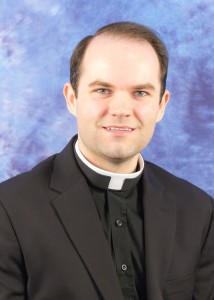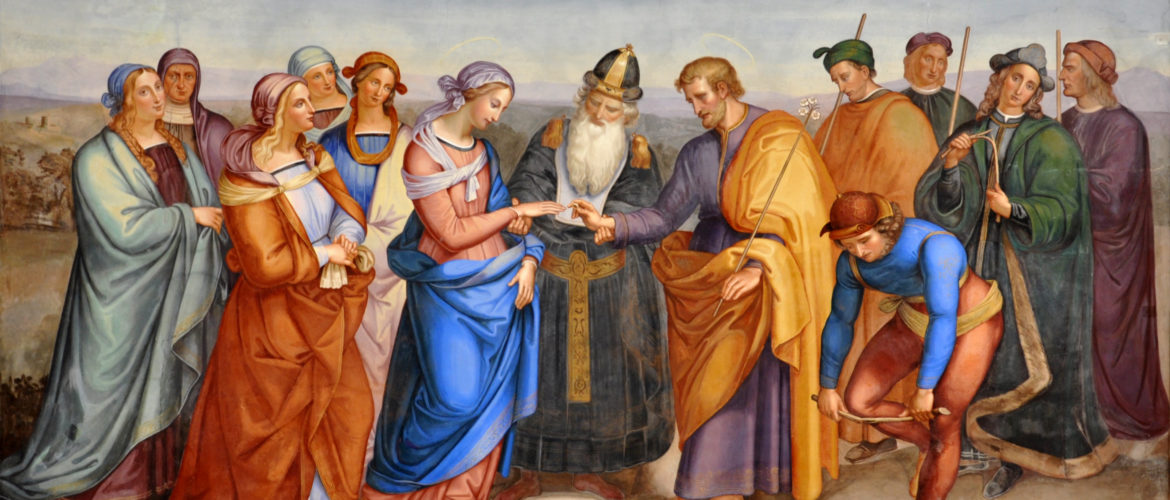By: Aaron Williams, Diocese of Jackson
On September 8, 2016 (the Feast of the Nativity of the Blessed Virgin Mary), the newly translated edition of the Order of Celebrating Matrimony was made available for usage in the dioceses of the United States of America. This edition, which will be mandatory on December 30, 2016 (the Feast of the Holy Family), apart from a significant revision of the language used in the rite, includes a few small but equally significant additions.
The first most major shift that needs to be recognized is the change in the title of the book itself. The previous edition was known as The Rite of Marriage. However, in considering the publication of this new edition, the bishops took into consideration the state of the secular understanding of marriage and decided on a term which, in their estimation, would represent the truth of this sacrament as a covenantal relationship between one man and one woman. Thus, the term ‘matrimony’ was assumed over ‘marriage’.
Another small change has already been in effect since the publication of the 2010 Roman Missal but is now codified in the actual ritual book. This is the omission of the Penitential Act at a nuptial Mass, but the mandatory inclusion of the Gloria in excelsis (Glory to God in the highest) at each nuptial Mass–not simply those that anticipate or are celebrated on a Sunday.
Perhaps the most noticeable alternation of the rite is seen in the form of an acclamation made by the priest and the assembly after the reception of the consent of the spouses. After each spouse has spoken the words of their consent, and the minister has spoken his affirmation, the priest or deacon says, “Let us bless the Lord,” to which all reply, “Thanks be to God.” This dialogue has a rich history in the liturgical usage of the Roman tradition. In the modern liturgy it is seen most often in the Liturgy of the Hours, particularly at the Office of Readings and the three Daytime Hours of Midmorning, Midday, and Midafternoon (traditionally called Terce, Sext, and None). In the older form of the liturgy, this acclamation, Benedicamus Domino, concluded each office and even some Masses in certain seasons or occasions. In the sung edition of the Liturgy of the Hours published in 2005 by the Monastery of Solesmes (the Antiphonale Romanum), the option is even given of concluding the offices of Morning Prayer (Lauds) and Evening Prayer (Vespers) with this same acclamation.
It’s meaning deserves consideration, since it is not readily apparent. First, what does it mean to “bless the Lord”? The prophet Daniel, in his recollection of the Canticle of the Three Children (cf. Daniel 3), includes a long list of exhortatory phrases. “Angels of the Lord, bless the Lord…you heavens, bless the Lord” (Daniel 3:58-59). King David prays, “Bless the Lord, O my Soul; all my being, bless his holy name” (Psalm 103:1). In the Jewish tradition of prayer, blessing had a central role. The “Berakhot” is a form of prayer which always begins with “barukh”–“blessed”.
Jewish Blessing of Bread:
Barukh ata Adonai Eloheinu, melekh ha’olam, hamotzi lehem min ha’aretz.
Blessed are You, LORD our God, King of the universe, Who brings forth bread from the earth.
In the modern liturgy, the Berakhot has found its place in the Preparation of the Gifts:
Offering of the Bread:
Benedictus es, Domine, Deus universi, quia de tua largitate accepimus panem, quem tibi offerimus, fructum terrae et operis manuum hominum: ex quo nobis fiet panis vitae.
Blessed are you, Lord God of all creation, for through your goodness we have received the bread we offer you: fruit of the earth and work of human hands, it will become for us the bread of life.
When we speak of blessing in this sense, it really is a sort of thanksgiving. Before offering the bread to God, we thank him for giving it to us “through his goodness”. The word ‘Eucharist’ (Eucharistia) literally means “thanksgiving”. Often times, when we bless food before meals, we speak of “giving thanks”. Thus, when the Church’s minister receives the consent of the spouses in a marriage, his immediate response is to call on all of us–the assembly–to “bless” the Lord, that is, to give him thanks for this great sacrament which has been formed between the bride and groom. What better response can we make than to acclaim, “Thanks be to God”?! Especially in light of the attacks marriage faces in our modern world, we should say “thanks be to God” at the sight of the formation of this covenant of love and holiness.
The ritual makes mention that “another acclamation may be sung or said”, and I expect that in most parishes it will be the case that the music director will select some hymn or antiphon to sing other than this text. But, I think it is necessary that we make some attempt to stay faithful to the recommended acclamation. At the very least, some form of text should be used which expresses thankfulness for this great mystery which all have witnessed, after which the rings may be exchanged.
A final comment I will make is not in regards to a change that has been made in the ritual, but an opportunity that is made by the rubrics. After making the Sign of the Cross and greeting the assembly, the minister is to address the faithful in order to “dispose them inwardly for the celebration of Marriage”. Two suggested texts are given, each with their own merit. However, the ritual calls that the minister may address the faithful in ‘these or similar words’. Often times, sadly, this phrase becomes a venue for the celebrant to make some silly remark or try to make light of the situation, but, I would recommend that in some cases the minister make use of this option to address the seriousness of the sacrament of marriage–especially in light of the recent difficulties in our country in attempting to “redefine” the meaning of this sacrament. Some statement could be added or altered to convey a less-known truth of the sacrament such as its permanence, or its purpose to bring the spouses to holiness and to raise up children in the faith.
In considering this question, I thought of the rite of marriage in the usage of the Anglican Ordinariate. Though not all may be aware, in 2009 Pope Benedict XVI issued the Apostolic Constitution Anglicanorum Coetibus which established within the Roman Catholic Church a group of the faithful who adhere the patrimony of the Anglican tradition. In other words, there are some Catholics who, while remaining just as Catholic as your average Roman Catholic, celebrate the liturgy according to certain practices which grew over several centuries since the Reformation in England. By issuing this constitution, Benedict expressed his desire that the Roman Church learn from those faithful Catholics of the Anglican tradition. In this sense, I looked at the exhortation given by the priest in the Anglican use and adapted it to reflect the language of the new Order of Celebrating Matrimony. Though not an official text, I provide it below as an example of what a priest may legitimately opt to do in some cases, both to further express the reality of marriage, but also to learn from our fellow Catholics of other traditions.
Dearly beloved, we are assembled here in the sight of God
to witness the joining together of N. and N. in Holy Matrimony;
which is an honorable estate, instituted by God himself,
signifying to us the mystical union between Christ and his Church;
a state which Christ himself adorned and beautified
by the first miracle he worked, in Cana of Galilee;
and is commended in Holy Scripture to be honorable among all men.
It is a sacrament not to be taken unadvisedly, lightly, or wantonly;
but reverently, discreetly, soberly, and in the fear of God,
duly considering the causes for which Matrimony was ordained:
namely, the sanctification of the spouses,
the procreation and education of children,
and the witness of holiness by lay men and women to the whole of society.Therefore, let us listen attentively
to the word that God speaks to us today.
Then, with holy Church,
let us humbly pray to God the Father,
through Christ our Lord,
for this couple, his servants,
that he lovingly accept them,
bless them,
and make them always one.
About the Author: Aaron Williams, Diocese of Jackson

Aaron M. Williams is a third year theologian studying for the Diocese of Jackson, MS. During his summers, Aaron is enrolled in a program at the Liturgical Institute of the University of Saint Mary of the Lake in Mundelein, IL where he is pursuing a masters degree in liturgy. He is due to be ordained to the transitional diaconate in the Spring of 2017.
Disclaimer
All opinions published by the authors on this blog are solely those of the authors. Although the goal is that they should, they do not necessarily express the views and opinions of the Archdiocese of New Orleans, Notre Dame Seminary, the Church, or their respective dioceses and bishops.
Notre Dame Seminary and the Archdiocese of New Orleans are not responsible for the comments of commenters, although every effort will be made to remove offensive comments.
If you should find an error or offensive content, please email the NDS Blog editorial team.

